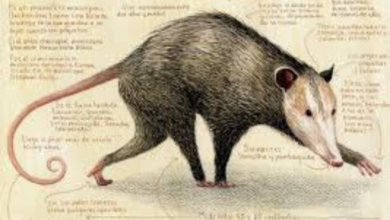Dolphin Discovery: Unveiling the Secrets of These Intelligent Creatures

Dolphins are one of the most fascinating marine mammals, known for their intelligence, social nature, and playful behavior. This article dives deep into the world of dolphins, exploring their evolution, behavior, habitats, and the significant role they play in marine ecosystems. Whether you’re a marine biology enthusiast or simply curious about these incredible creatures, this comprehensive guide provides a thorough understanding of dolphins and the ongoing efforts to protect them.
Introduction to Dolphin Discovery
Dolphin Discovery captivated human imagination for centuries with their friendly demeanor and impressive acrobatics. They are often regarded as the most intelligent of all marine animals. This section introduces readers to the world of dolphins, highlighting their global significance and the reasons behind the enduring human fascination with these creatures.
Evolution and History of Dolphins
Dolphins are part of the cetacean family, which also includes whales and porpoises. The evolutionary journey of dolphins is a story of adaptation and survival, dating back over 50 million years. Initially land mammals, dolphins gradually evolved to become the agile swimmers we know today. Their streamlined bodies, adapted for efficient swimming and hunting in water, are a testament to their evolutionary success.
Ancestral Lineage of Dolphins: Dolphins share a common ancestor with the hippopotamus, a semi-aquatic mammal. This section explores the evolutionary path from land to water, highlighting significant adaptations that have allowed dolphins to thrive in marine environments.
Evolutionary Adaptations: Key adaptations include the development of echolocation for hunting and communication, a sophisticated respiratory system allowing for deep dives, and social structures that enhance survival chances.
Types of Dolphins
Dolphins are diverse, with over 90 species ranging from the well-known bottlenose dolphin to the elusive Amazon river dolphin. This section categorizes the various species based on habitat, size, behavior, and conservation status.
Common Dolphin Species and Their Characteristics: This subsection provides an overview of widely recognized dolphin species, such as the bottlenose dolphin, common dolphin, and spinner dolphin, describing their physical characteristics, behaviors, and habitats.
Rare and Endangered Dolphin Species: Some dolphins, like the Vaquita and the Irrawaddy dolphin, face critical threats due to habitat loss and human activities. This part sheds light on these lesser-known species and their struggles for survival.
Dolphin Habitats Around the World
Dolphins inhabit diverse environments, from vast oceans to rivers and estuaries. Understanding these habitats is crucial for conservation efforts.
Oceanic Habitats and Geographic Distribution: Dolphins are found in warm and cold waters across the globe. This subsection explains the different types of oceanic habitats, including coastal areas, open seas, and deep ocean basins, where dolphins are commonly found.
Freshwater Dolphins and Their Unique Environments: Freshwater dolphins are rare and have adapted to live in river systems such as the Amazon and Ganges. This subsection explores their unique adaptations and the challenges they face in these environments.
Dolphin Anatomy and Physiology
Dolphins possess unique anatomical features that enable them to thrive in aquatic environments. Their bodies are streamlined for speed, and they have specialized respiratory and sensory systems.
Unique Physical Features of Dolphins: Dolphins have a fusiform body shape, a dorsal fin for stability, and powerful tail flukes for propulsion. This section provides a detailed overview of these physical characteristics.
Adaptations for Swimming and Hunting: Dolphins are expert hunters, equipped with echolocation, sharp teeth, and excellent eyesight. This subsection explores how these adaptations contribute to their predatory skills.
Dolphin Communication and Intelligence
Dolphins are known for their complex communication abilities and high intelligence. They use a variety of sounds, body postures, and behaviors to communicate with one another.
Methods of Communication: Echolocation and Vocalizations: Dolphins use echolocation to locate prey and navigate their environment. This subsection explains how echolocation works and the different types of vocalizations dolphins use.
Cognitive Abilities and Problem-Solving Skills: Dolphins exhibit behaviors that suggest high levels of intelligence, such as tool use, self-recognition, and the ability to learn complex tasks. This part delves into research studies that highlight these cognitive abilities.
Social Structures and Behavior of Dolphins
Dolphins are social animals that live in groups called pods. These groups have complex social structures and dynamics.
Pod Dynamics and Social Hierarchies: Dolphin pods are often structured by family relationships and social bonds. This subsection discusses the role of pod dynamics in dolphin survival and reproduction.
Mating Behaviors and Parenting: Dolphins have intricate mating rituals and strong maternal bonds. This section explores the reproductive strategies and parenting behaviors of different dolphin species.
Feeding Habits and Diet of Dolphins
Dolphins are carnivorous, feeding primarily on fish and squid. Their diet varies depending on species and habitat.
Typical Diet and Hunting Techniques: This subsection covers the types of prey dolphins hunt and the methods they use, such as coordinated group hunting and solo strategies.
Role of Dolphins in Marine Ecosystems: Dolphins play a critical role as apex predators in marine ecosystems, helping maintain the balance of marine life. This section explains their ecological impact.
Human-Dolphin Interactions
Humans have interacted with dolphins for thousands of years, both in the wild and in captivity. These interactions have evolved significantly over time.
Historical Interactions Between Humans and Dolphins: Dolphins have appeared in myths, art, and literature throughout history. This part explores ancient human-dolphin relationships and their cultural significance.
Modern Conservation Efforts and Ethical Considerations: As our understanding of dolphins has grown, so too has the movement to protect them. This section discusses modern efforts to conserve dolphin populations and ethical considerations surrounding captivity and dolphin tourism.
Dolphin Conservation Status
Many dolphin species face threats from human activities, including fishing, pollution, and habitat destruction.
Threats to Dolphin Populations: This subsection identifies the major threats facing dolphin populations today, such as bycatch, marine pollution, and climate change.
Conservation Initiatives and Organizations: Numerous organizations work to protect dolphins through research, advocacy, and direct conservation efforts. This part highlights some of the key players and their initiatives.
Myths and Cultural Significance of Dolphins
Dolphins have a rich presence in mythology and cultural lore, often symbolizing intelligence, freedom, and protection.
Dolphins in Mythology and Folklore: This subsection explores how different cultures have viewed dolphins throughout history, including their roles in Greek, Roman, and Polynesian myths.
Dolphins in Contemporary Culture and Media: Dolphins continue to captivate audiences today, appearing in films, literature, and popular media. This part discusses their representation and impact on public perception.
